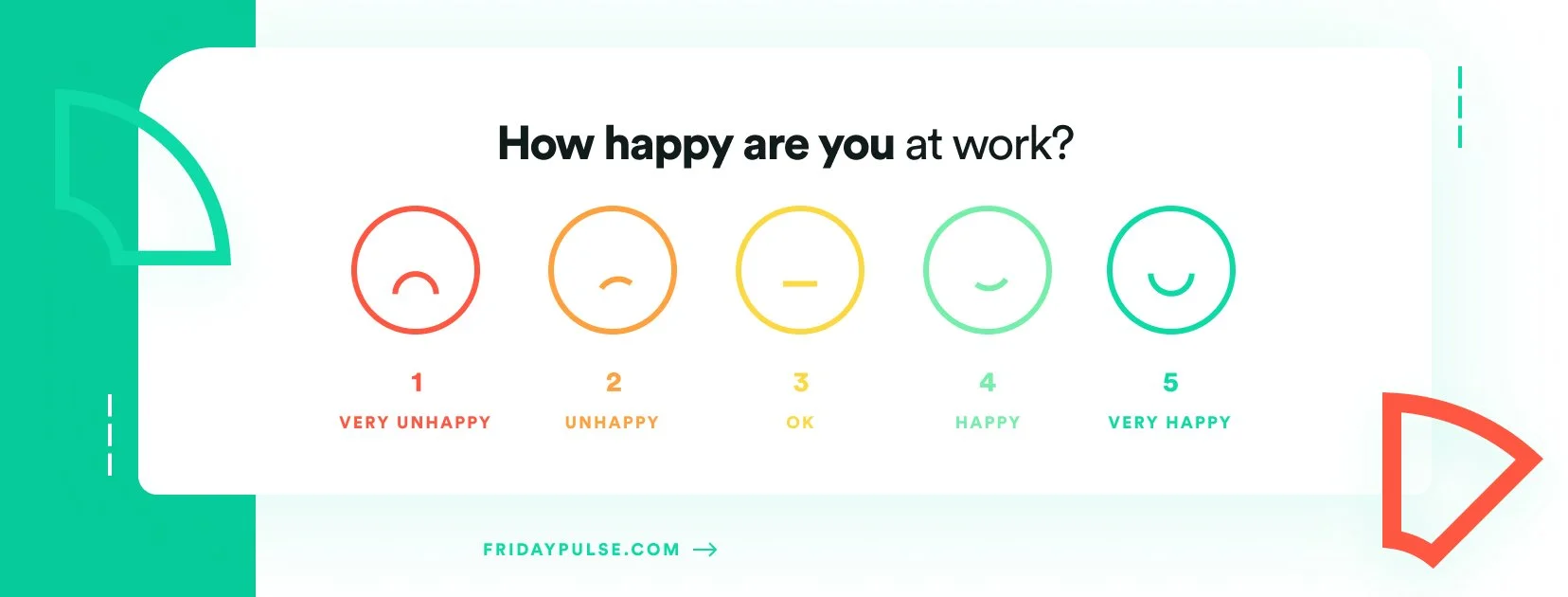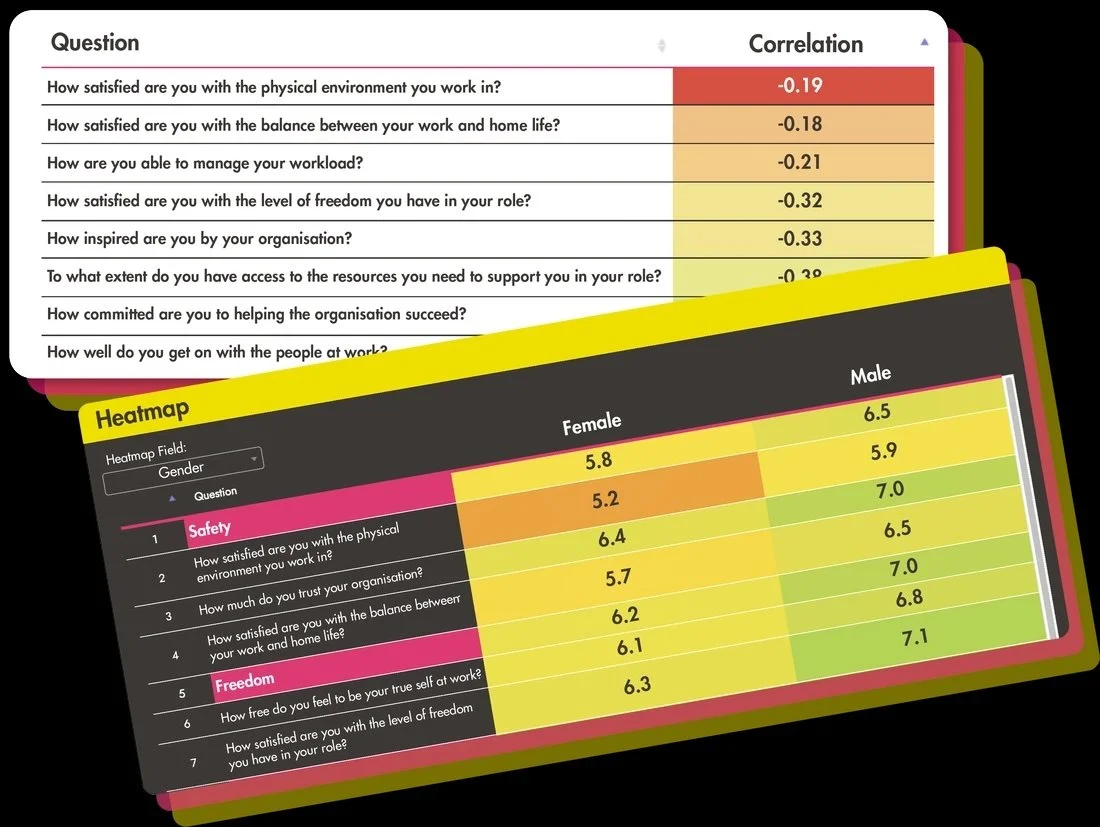Idea 17 - Want to make your team happier? Ask them how they are. It’s as simple as that.
“The best way to find out if someone is happy is to ask them how they are feeling.”
Laurie Santos - How to Quantify Happiness on Youtube
Laurie Santos - Professor of psychology at Yale and happiness expert
I’m going to go out on a limb now …
In my opinion, the single most effective action you can take to make your team happier at work is to simply ask them how they are feeling. It may not change anything immediately, but it will start you and your team on a journey that will ultimately make your team happier, perform better, and genuinely benefit your business.
Thanks for reading Happier at work - 5 minute hacks to build happier teams! Subscribe for free to receive new posts and support my work.
In my company, Secret Source, we didn’t use to measure happiness. We didn’t ask people how they were feeling, and we didn’t send out surveys. It’s not that we didn’t care about them; we cared a lot and did everything we thought would make them happy. We gave our team generous benefits, organised nights out, and built a culture of trust and safety. With our clients, we were honest, transparent, and ruthlessly organised.
We did all the things that people think will make the employees and customers happy.
Yet, for some reason, it didn’t always work. For some reason, our teams and our customers weren’t always happy. We didn’t know why.
Then one of our team had a genius idea.
“Why don’t we ask them?”
So we did.
As we wanted to show the results to our management team each week, instead of asking our team and clients if they felt Good, OK, or Bad, we asked them to rate themselves as Green, Orange, or Red. This way, we could create a nice, pretty spreadsheet.
Friday Pulse’s weekly survey
That one tiny little question, combined with accidentally asking our clients to answer with a colour instead of a word, transformed our company. Since that moment in 2019, we have only had one unhappy customer.
Keeping clients and employees happy is difficult enough and even more difficult if you don’t even know how they are feeling.
How to find out if someone is happy
There have been hundreds of attempts to find the best way to determine if someone is happy, from long questionnaires to MRI scans. However, researchers have discovered that the best way to measure happiness is to self-report, and the question “How are you feeling?” is as good a question as any.
When measuring happiness at work, where participants may not feel 100% safe being honest, the trick is in the answer options. Instead of asking people if they feel Good, ok or Bad, ask people to rate how they feel using colours or numbers instead. People find it far easier to say “I am feeling orange this week” than “I’m not happy” or “I think the project manager is not doing a good job”.
People feel a lot safer answering in a non-judgmental way.
One tiny question - big conversations …
Finding out how happy our team and our clients felt was a game changer. Yet, the biggest impact resulted from the new conversations that followed. Conversations that we’d never had before.
In the olden days, if someone was unhappy, we never knew about it. Now we knew, and we also had an opportunity to find out why.
You see, if someone answered “orange”, we didn’t just write it down and walk away; we asked them why they felt that way. The information we’ve gained from these conversations helped us identify areas of weakness in our company we had no idea existed Over the years, we’ve learnt that people hadn’t felt trusted and felt micromanaged, that they felt disconnected from the team or management, and that they didn’t feel safe speaking out.
What gets measured gets managed
Peter Drucker*
Nowadays, we send out a weekly check-in where our team marks how they are feeling on a scale of 1-5, and we follow it up with a 30-minute one-to-one with their line manager. Each quarter we also send out a questionnaire (similar to this one) where we delve into why they are feeling how they are (in case it hadn’t been picked up in their one-to-ones).
The Happiness Index dashboard
As a result, we learnt when our team didn’t feel that they had a clear career plan. So we developed a professional ladder. We learnt which teams weren’t collaborating and we trained them in how to feel psychologically safe. We discovered when our remote workers felt disconnected and we began programs to help integrate them into the company.
By understanding the needs of our team, we were able to make specific targeted interventions aimed at their needs. It transformed our company.
Tip of the week
Ask your team how they are feeling, and if they say orange, ask them why.
When we started we just used a Google Form sent via Slack to collect our answers but nowadays there are loads of apps that will do it (and much more) for you. I’d recommend Friday Pulse and The Happiness Index if you’re serious about it. Friday pulse has a free tier for up to 11 people if you don’t have the budget.
When people feel they are listened to at work and have the support they need, they feel happier. It fulfils their need for safety and support.
…
If you think your business could benefit from learning about the science of wellbeing and discovering how to improve team happiness and performance, I’d love to chat. In my day job I talk to business leaders and run workshops for teams. I teach the basics of happiness in the workplace and provide practical guidance on how companies can improve team performance using the science of wellbeing. You can find more details about my work on richardclarke.eu or feel free to book a free 30 minute consultation call.
*”What gets measured gets managed” is most often attributed to Peter Drucker, the famous management theorist. However, recent research suggests it wasn’t him who said it, and also the whole theory of “What gets measured gets managed” is also slightly flawed. The reason I have added it in this article, is because if you measure or monitor happiness, you are far more likely to do something about it.
Follow the blog
I regularly write on how you can use the science of happiness and the science of wellbeing to improve team performance. Sign up now to receive the latest blog posts in your inbox.




